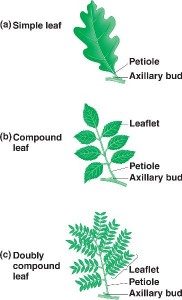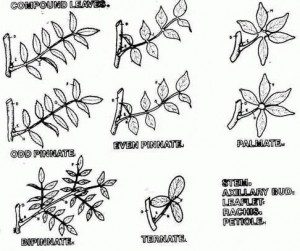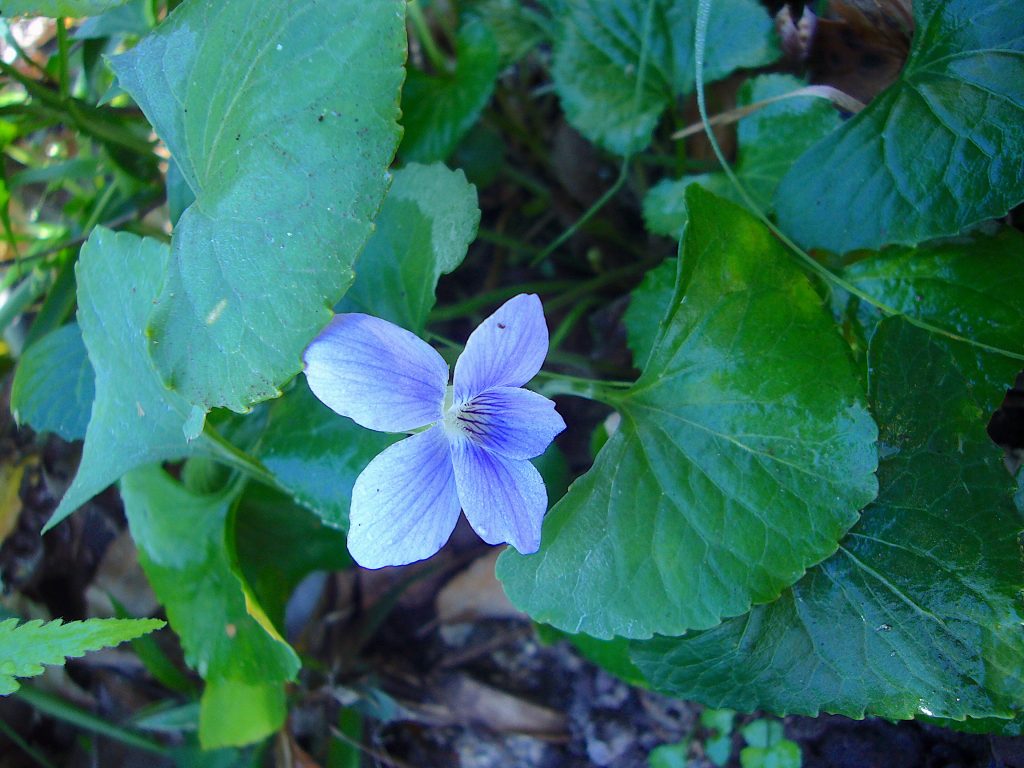
A common blossom that’s easy to identify is the wild violet. It’s cultivated brethren is the pansy. There are a huge variety of violets in North America ranging from field pansies to those that like to grow down hill from the septic tank. Whether wild or cultivated violets are attractive, personable blossoms, usually on the sweet, viscous side. There are a couple of precautions, however. The first is to make sure the soil they are in — either a pot or bed — is wholesome and that the water they are getting is good. If they come from a garden center they might have pesticides on them. The other precaution is a bit more esoteric: Yellow blossoms tend to have a laxative effect. You can read about violets here. I have a video about them here.
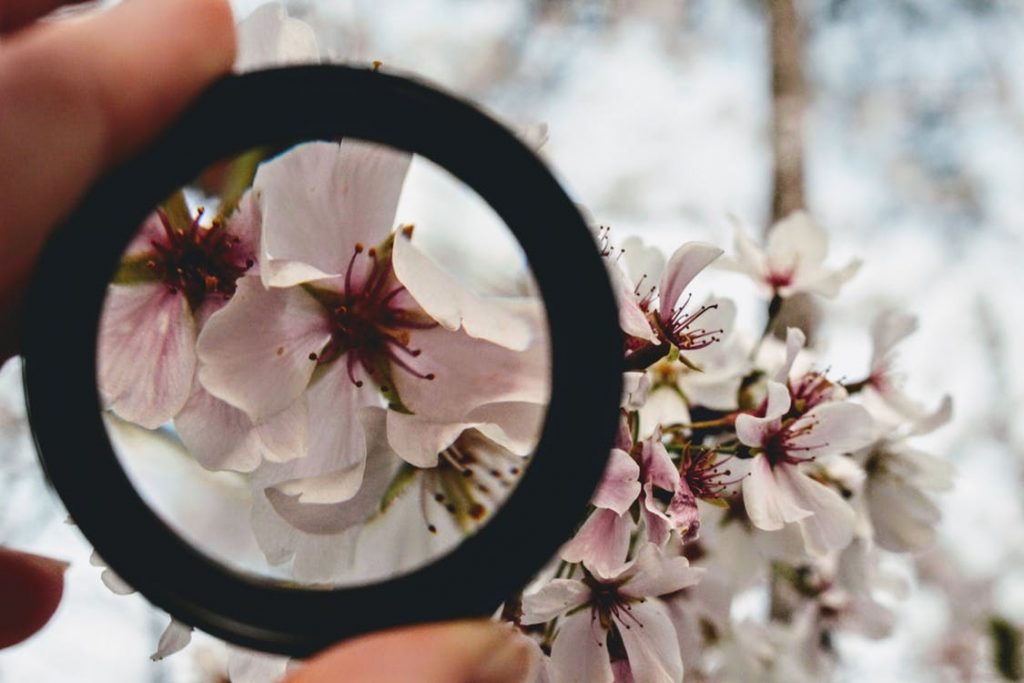
What is the prime mistake made by foragers? That’s easy to answer: They make the plant fit the description. It happens to beginners and old hands as well. The beginners don’t see the details and the more experienced are irritated the plant doesn’t fit so they stretch the definitions. But as the bromide warns the “devil is in the details.” I will readily admit I loathe details. It is not me by mindset or personality. I am sympathetic with those for whom details make their glaze over. But details, as much as we might not like them, are what foraging is all about. If I can suppress my irritation with details and work with them so can you. The good part is that you can get to know a plant well enough that the details make a whole picture and you don’t have to think about them as much with plants you know. Besides making a plant fit the description what is the most over-looked plant detail? Leaf structure.
BCompound leaves can be confusing. Leaves are either simple or compound. A simple leaf is one leaf whereas a compound leaf is comprised of several leaflets. Compound leaves are divided into two to several dozen leaflets.
A leaf is attached to a stem. There is also a bud there. When it is attached to the main stem it is simple. When it is attached to a stem which is in turn attached to a main stem with a bud it is compound. Where the bud is, is the key. Oaks have simple leaves as do birches, sycamores, and elms. Hickories have compound leaves, as do many trees in the greater pea family. Compound leaves can also be called pinnate, which means feather because someone thought they looked featherish. Compound leaves can be bipinnated and tripinnated. And they can be palmately pinnated.
In the diagram above left there is a simple leaf, a compound leaf, and a doubly (bipinnated) leaf. It would be tempting to call all the green things leaves but they are not. The simple single leaf is a leaf, but the rest are leaflets. They can also be even or odd depending on whether there is a leaflet at the end, see diagram two at right. Also they can be palmate (think like a palm and fingers.) Clover and oxalis are two more examples of compound leaves. In the clover there are three leaves at the end of the stem, shaped like a T. In the oxalis there are three leaves at the end equally distributed around the stem. That is sometimes called a terminal compound leaf.
My foraging classes are on the east coast of Florida this week, Melbourne Saturday, West Palm Beach Sunday. Should be great weather both days.

Saturday, January 19th, Wickham Park: 2500 Parkway Drive, Melbourne, FL 32935-2335. 9 a.m. to noon. Meet at the “dog park” inside the park .
Sunday, January 20th, Dreher Park, 1200 Southern Blvd., West Palm Beach, 33405. p a.m. to noon. Meet just north of the science center.
Saturday, January 26th, Colby Alderman Park, 1099 Massachusetts Street Cassadaga, Fl. 9 a.m. to noon. Meet by the bathrooms.
Sunday, January 27th, Bayshore Live Oak Park, Bayshore Drive, Port Charlotte . 9 a.m. to noon. Meet in the parking lot across from Ganyard Street.
Saturday, February 2nd, Boulware Springs Park, 3420 SE 15th St., Gainesville, FL 32641. Meet at the picnic tables next to the pump house. 9 a.m. to noon.
Sunday, February 3rd, Blanchard Park, 10501 Jay Blanchard Trail, Orlando, FL 32817. 9 a.m. to noon. Meet near the tennis court near the YMCA building.
For more information about the classes go here.
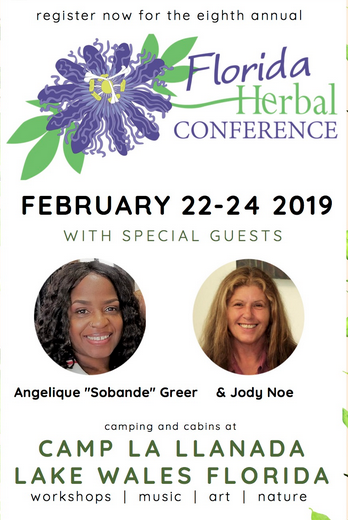
The Florida Herbal Conference is February 22-24. It’s their eighth annual event and for the eighth year I will be teaching there. You can learn quickly at conferences because you are getting a distillation of information from teachers with years of experience. Any questions can be answered quickly and to the point, no rummaging around to resolve an issue. You’re also with like-minded folks so there’s instant camaraderie. You are the majority. For more information go to: Florida Herbal Conference.
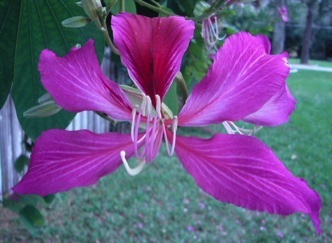
I’ve received some questions regarding Bauhinias, which are found in warmer areas of several states and countries. “Discovered” in Hong Kong, the blossoms are edible and on some, the seeds are edible as well which presents a problem. First, there are several hundred of them — including hybrids — and you might not see them often enough to know exactly which Bauhinia you are looking at. It becomes an issue of familiarity, particularly regarding which ones have edible seeds. So it’s a pretty tree, has edible blossoms but when it comes to the seeds you need to be careful and do your homework. To read more about this attractive tree click here.
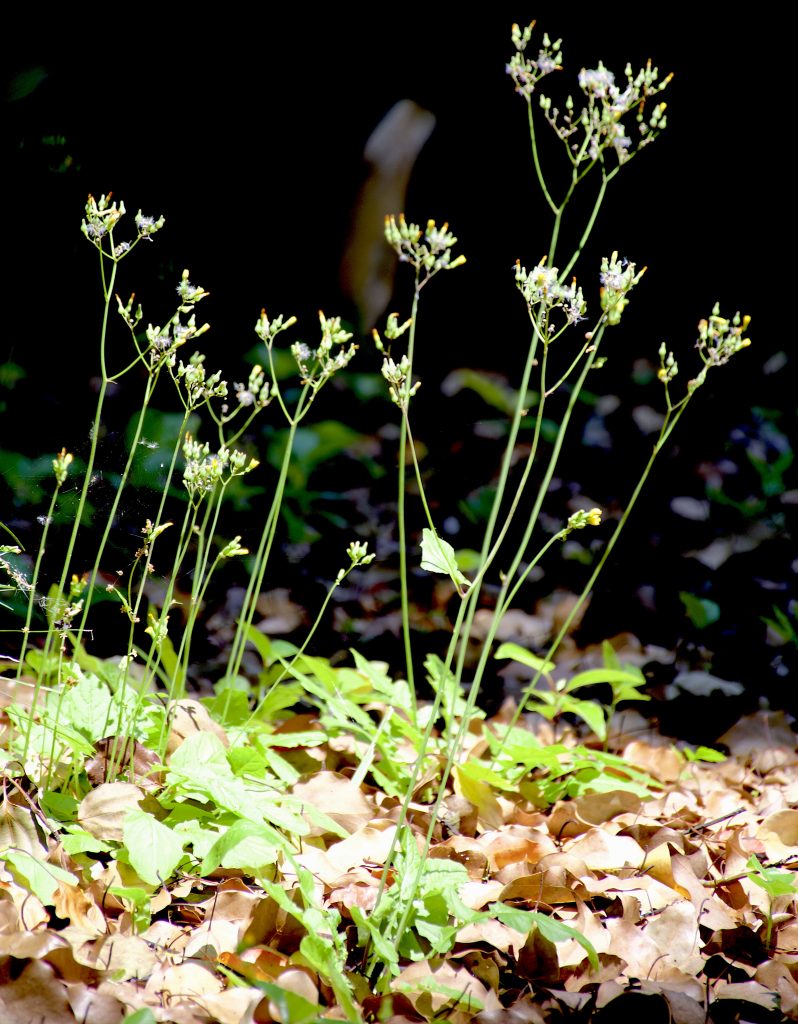
Also making itself better know this spring is a Dandelion relative, the False Hawk’s Beard. While one can find it all year the edible favors the spring. It’s a very common lawn invader and can occasionally get up to a couple of feet tall. Young leaves are eaten raw, older leaves which can be tougher and a bit bitter, can be boiled. I have a Croatian friend who also cooks up the roots, too. They can be easily distinguished from the Dandelion by the flower stalk which is branched (unlike the Dandelion which has one straight stalk.) Also the False Hawk’s Beard can have blossoms in all stages of development at the same time, unopened, open, and going to seed. I have a video on it here . You can read more about the False Hawk’s Beard here.
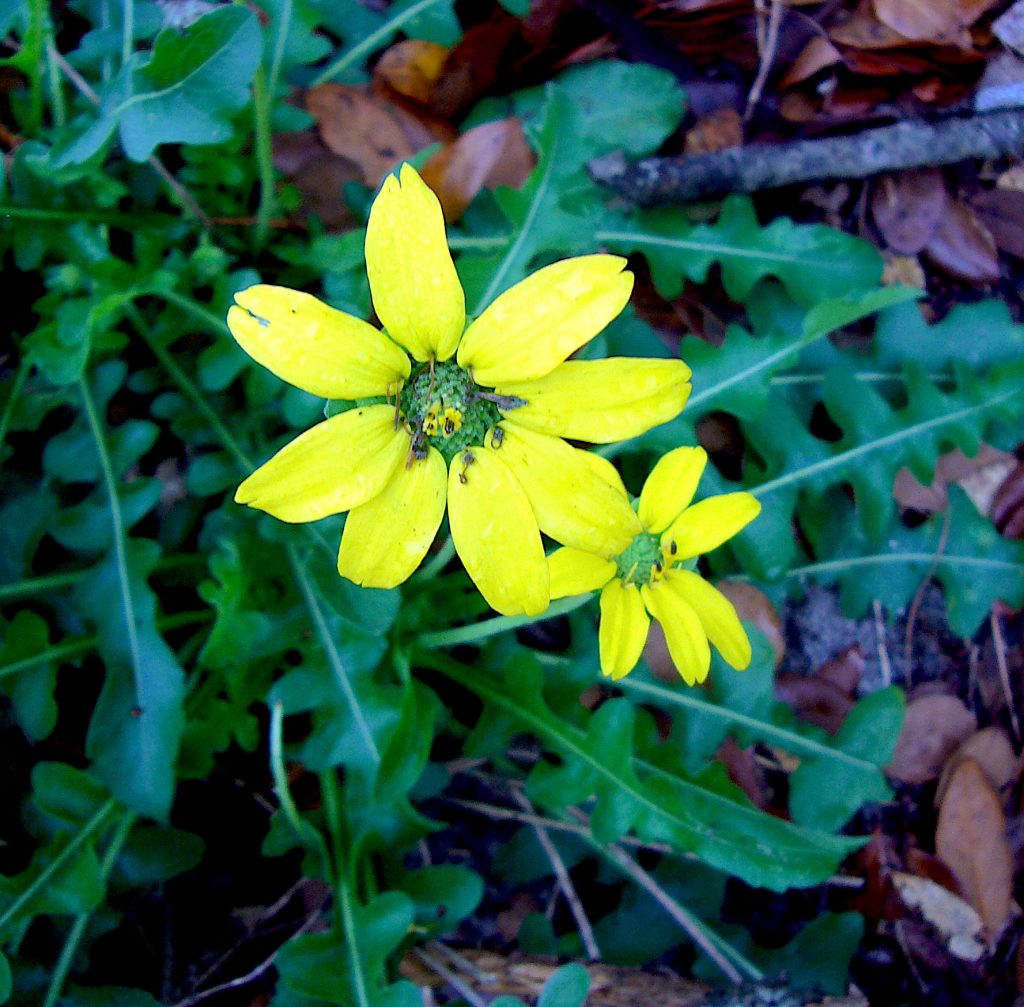
As far as I know this next plant is not edible or medicinal and probably should not be mentioned in a newsletter about edible wild plants. However, it’s commonly seen, people do inquire about it, and for a “Daisy” it has if not a unique aroma certainly an unusual one.” Locally called Green Eyes, Berlandiera lyrata has blossoms that smell like cocoa or unsweetened chocolate. The fragrant parts of the blossom are the stamen which attract beneficial insects. Also called the “Chocolate Daisy” it grows in moderately moist to moderately dry areas and can be as tall as two feet. I seem to always find it in dryer areas. Stalks are leafless. The “green eye” portion is the center of the flower before its covered with tiny blossoms which then gives it a maroon color. You can pull the rays to smell the chocolate or crush a blossom. Locally it can bloom nearly year round.
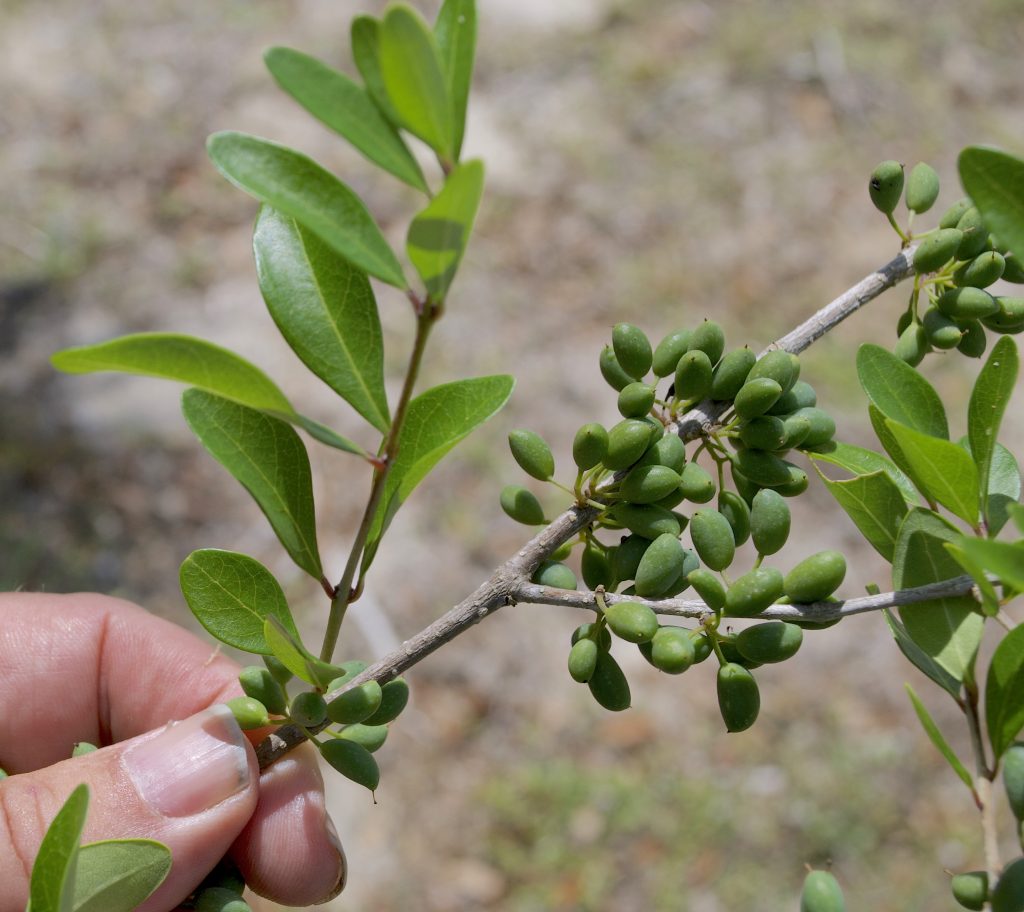
This week I saw a tree I had not seen in many years, Foresteria segregata. Also called Florida Privet and Swamp Privet, you can find it anywhere from brackish waterways to an intentional ornamental in landscaping. The straight limbs were used for arrows and the blue berries possibly used for ink. I suspect the species has never worked its way into ethnobotanical literature because the berries taste bad. I’m not sure, however, if the story ends there. Yes, the berries are not considered edible. That said I have not found any references to toxicity but that might be because they are too foul to eat. However, it is in the Olive family and olives don’t taste good unless “cured.” What I wonder is 1) if the fruit are edible if 2) they are treated (meaning cured) like olives? It’s pure speculation on my part. They could be toxic for all I know. But it’s an idea.

All of Green Deane’s videos available for free on You Tube. They do have ads on them so every time you watch a Green Deane video I get a quarter of one cent. Four views, one cent. Not exactly a large money-maker but it helps pays for this newsletter. If you want to see the videos without ads and some in slightly better quality you can order the DVD set. It is nine DVDs with 15 videos on each for a total of 135 videos. Many people want their own copy of the videos or they have a slow service and its easier to order then to watch them on-line. The DVDs make a good gift for that forager you know especially on long, cold winter months. Individual DVDs can also be ordered or you can pick and choose. You can order them by clicking on the button on the top right hand side of this page (if your window is open wide enough.) Or you can go here.

Want to identify a plant? Looking for a foraging reference? Do you have a UFO, an Unidentified Flowering Object you want identified? On the Green Deane Forum we chat about foraging all year. And it’s not just about warm-weather plants or just North American flora. Many nations around the world share common weeds so there’s a lot to talk about. There’s also more than weeds. The reference section has information for foraging around the world. There are also articles on food preservation, and forgotten skills from making bows to fermenting food. One special section is “From the Frightening Mail Bag” where we learn from people who eat first then ask questions later. You can join the forum by clicking on “forum” in the menu.

Donations to upgrade EatTheWeeds.com have gone well. Thank you to all who have contributed to either via the Go Fund Me link, the PayPal donation link or by writing to Green Deane POB 941793 Maitland FL, 32794. There are many needs left such as expanding the foraging teacher page and the page on monotypic edibles. Several functions were also lost when we transitioned to the new website. I’m still having a hard time finding articles I wrote! There’s always something and such things get more complex and expensive every year. Indeed, the average email cost to send each newsletter is $20.
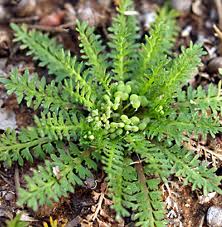
Swinecress, is low-growing and found mostly in lawns. It’s in the mustard family so the general taste is identifiable quickly. Swinecress is also among the few plants whose botanical name helps us identify the species. Sometimes a plant will have two names that honor two botanists which doesn’t help us with identification. Swinecress, however, is Coronopus didymus. Coronopus means Raven Foot, or we would say crow foot. To some, or at least the naming botanist, the leaf resembles a crow’s foot. And while that might be so it is the Didymus part that makes the plant easy to identify. Didymus means two testes and indeed it takes very little imagination to see that imagery in the arrangement of the species seeds. Swinecress is edible raw or cook. It has a mild flavor at first that then grows stronger as you eat it. To read more about this micro-mustard go here.
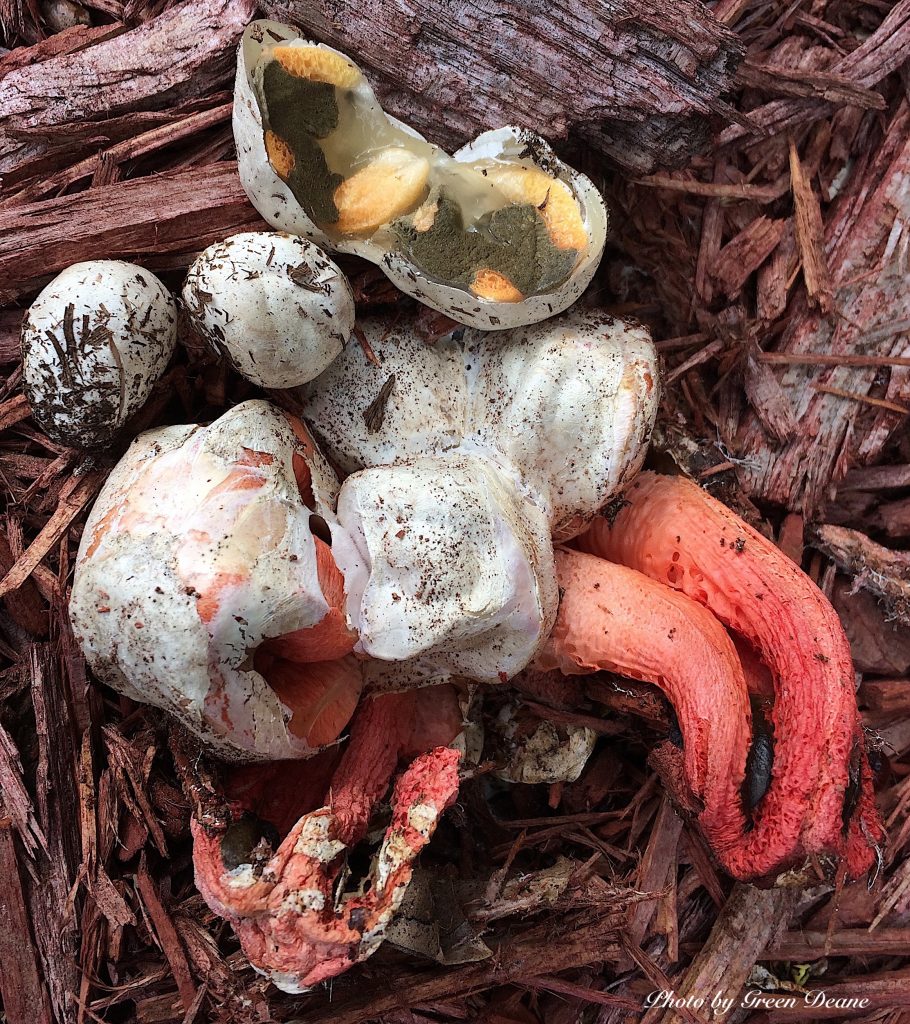
Many cheeses have a strong aroma. My mother likened them to dirty socks. She was not a cheese eater, nor did she eat mushrooms. Just as well. We have a very smelly mushroom which when young smells quite tasty but when past the juvenile stage smells like a dead animal. It’s the stink horn. There are many stink horns. This one is Clathrus columnatus. Opinions vary whether it is edible in the “egg” stage. I don’t conveniently see them that often in the “egg” stage to give them a try. Also note I recently uploaded a video on Ringless Honey Mushrooms.
Oh…. I almost forgot: A decade ago I wrote and read an editorial for National Public Radio Holland. They put music to it and it was on their “Earth Beat” site for many years. I thought it a good essay and had it on my site until the link went down. This week I dug up the three minute audio, imported it into Imovie and put photos with it. It’s called Lawns Aren’t Green:
If you would like to donate to Eat The Weeds please click here. Or you can use my Go Fund Me link, or by writing to Green Deane POB 941793 Maitland FL, 32794
This is weekly issue 338.

